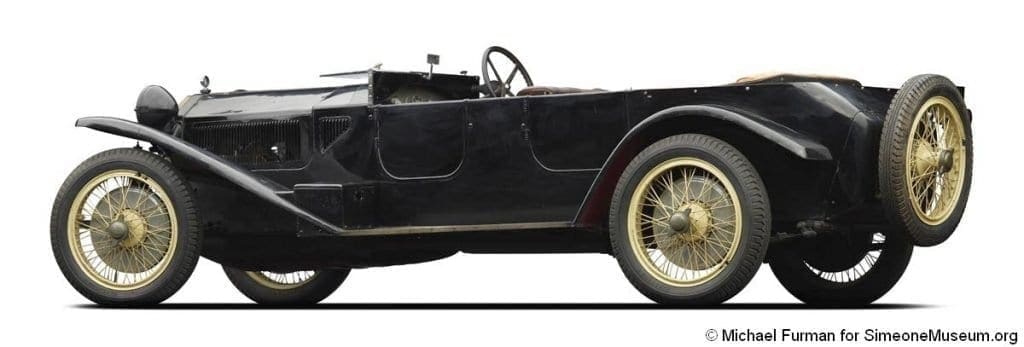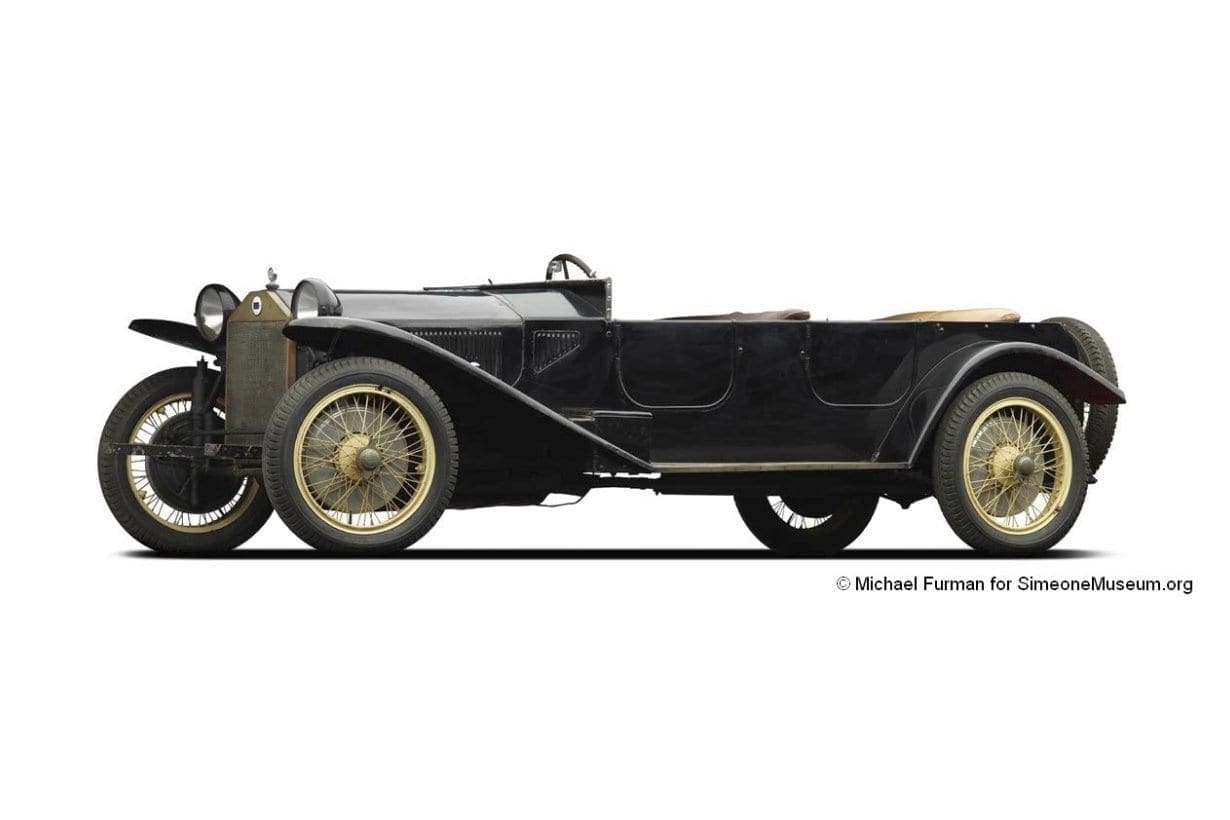This was the first car with independent front suspension and
THESE CARS
We include the Lancia Lambda in the collection as a sports car, more for its outstanding technical innovations than its performance, although it took part credibly in the first Mille Miglia race in 1927 where Lancia took the first three places in Class D (3,000 cc).
The following year, a factory entered car almost finished second place to a supercharged Alfa Romeo, a victim of a dropped valve near the end of the grueling race. Later, the Lambda replaced by the more formal Dilambda and no longer competed seriously in sports car racing for several years.
Why was this car so important technologically? First, it was the first car to feature a load bearing monocoque body which, ultimately, became the standard of auto manufacturing a decade later. Someone once said designer Vincenzo Lanca divined the idea when he contemplated the design of ships in which they incorporate the hull as part of the aggregate strength. With body sections stamped along with a chassis, the car was remarkably stable, easy to manufacture, but limited in terms of the ability to add different carrozzerie. Lancia abandoned the design in the early 1930s when the desire for different bodies in the now more luxurious idiom demanded a different platform.
By the mid-1930’s this unibody technique became universal. The driveshaft tunnel was the backbone of the car and they could seat the passengers beside rather than above the tunnel there by lowering the overall profile. An equally dramatic innovation was the independent sliding pillar front suspension comprised of an oil-filled tube with springs, adjustable through an opening on the front fender by which each wheel could move vertically through a significant radius, an important first.
The engine itself was different. A V4 in construction the angle of which was only 14 degrees with an overhead valve drive train. Finally, the external design was dramatic and very attractive. Because of the low set frame, a lithe profile was effected. Sweeping flared fenders graced the simple body which tapered nicely in the rear. Although not the first to do so, four-wheel brakes were standard on these cars since 1923. With this significant change, many consider Lancia the first mass-produced cars whose stopping power equaled their acceleration. They made Lambdas right up through 1931 when the Dilambda supervened. There was a progressive increase in displacement and horsepower and the car in our collection has been converted in period, to the most powerful engine, the eighth series, as described in the specification.
OUR CAR
This car has little significant restoration. The body is in the standard early Lancia, painted black, although the wire wheels may have been spray painted years ago. The most significant update, however, is that it had been re-engineered in
I purchased the car at auction from Christie’s, who knew the family of the owners. They reported that the car was in the possession of the previous owner, now deceased, since at least the 1940s. The car came with registration certificates dating back to 1951, showing it had always lived on Formosa Avenue in Hollywood, and spent the last five decades in a garage. Since the donor car was probably made available in the 1930s (the eighth series cars stopped in 1931), it is likely that this car has been in America all of its life. This would be commensurate with the presence of the front bumpers and the remaining history.
THE FAILED FANTASY
There was a photo with the car. It’s a picture of Greta Gustfansen driving a third series Lancia Lambda, identical in every way to ours, including the American accessory front bumpers. It would seem, therefore, that this could be the same as ours, particularly if we could make a Hollywood connection from the 1930s. We know that Greta was a great car fan. After she came to America, she had a custom-made Duesenberg and a special Rolls Royce. When she came to America, she changed her last name to Garbo. Later we researched the photograph and her car pre-dates ours. A transient fantasy denied.

















